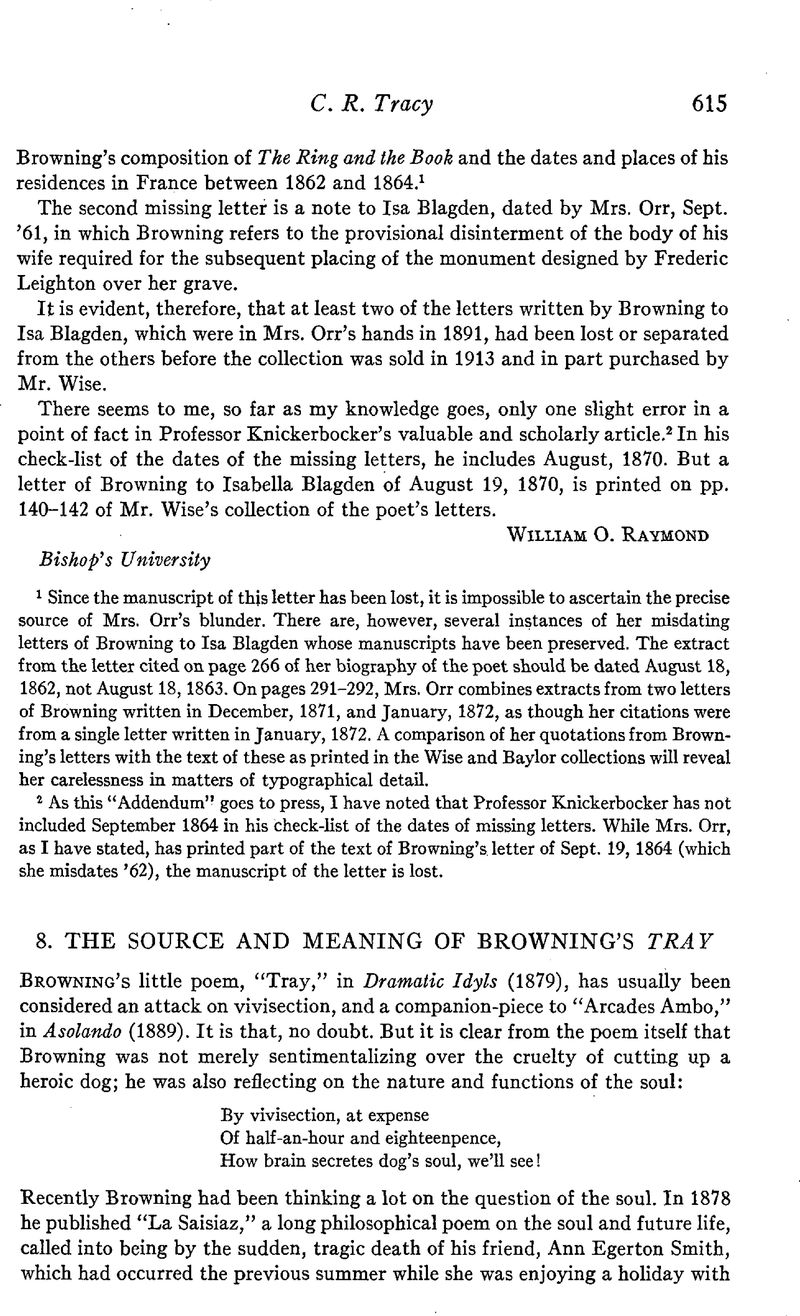No CrossRef data available.
Article contents
The Source and Meaning of Browning's Tray
Published online by Cambridge University Press: 02 December 2020
Abstract

- Type
- Comment and Criticism
- Information
- Copyright
- Copyright © Modern Language Association of America, 1940
References
1 Frederic Harrison, “The Soul and Future Life,” The Nineteenth Century, i (1877), 623–636 (June), and 832–842 (July).
2 “A Modern ‘Symposium,‘ The Soul and Future Life,” Ibid., ii (1877), 329–354 (September), and 497–536 (October).
3 Though in “La Saisiaz” Browning described the series as “a certain fence-play,—strife Sundry minds of mark engaged in” (ll. 163–164, italics mine), Miss Smith could hardly have seen more than the work of the one author, Harrison, for she died on September 14. Doubtless Browning read the other articles subsequently and wrote the poem after his memory had become blurred. In lines 241–254, in fact, he may allude to the article in the symposium by Lord Blachford (Ibid., ii, 341, 347–348). Since “Tray” is indebted only to Harrison's articles and shows a fairly exact verbal recollection of them, probably it was written before “La Saisiaz,” perhaps even before Miss Smith died, for it is not the sort of poem he would have written just afterwards.
4 Ibid., i, 627.
5 Ibid., i, 630.—I am responsible for all italics in quotations.
6 Ibid., i, 630.
7 Ibid., i, 832.
8 Ibid., i, 628.
9 Ibid., i, 834.




